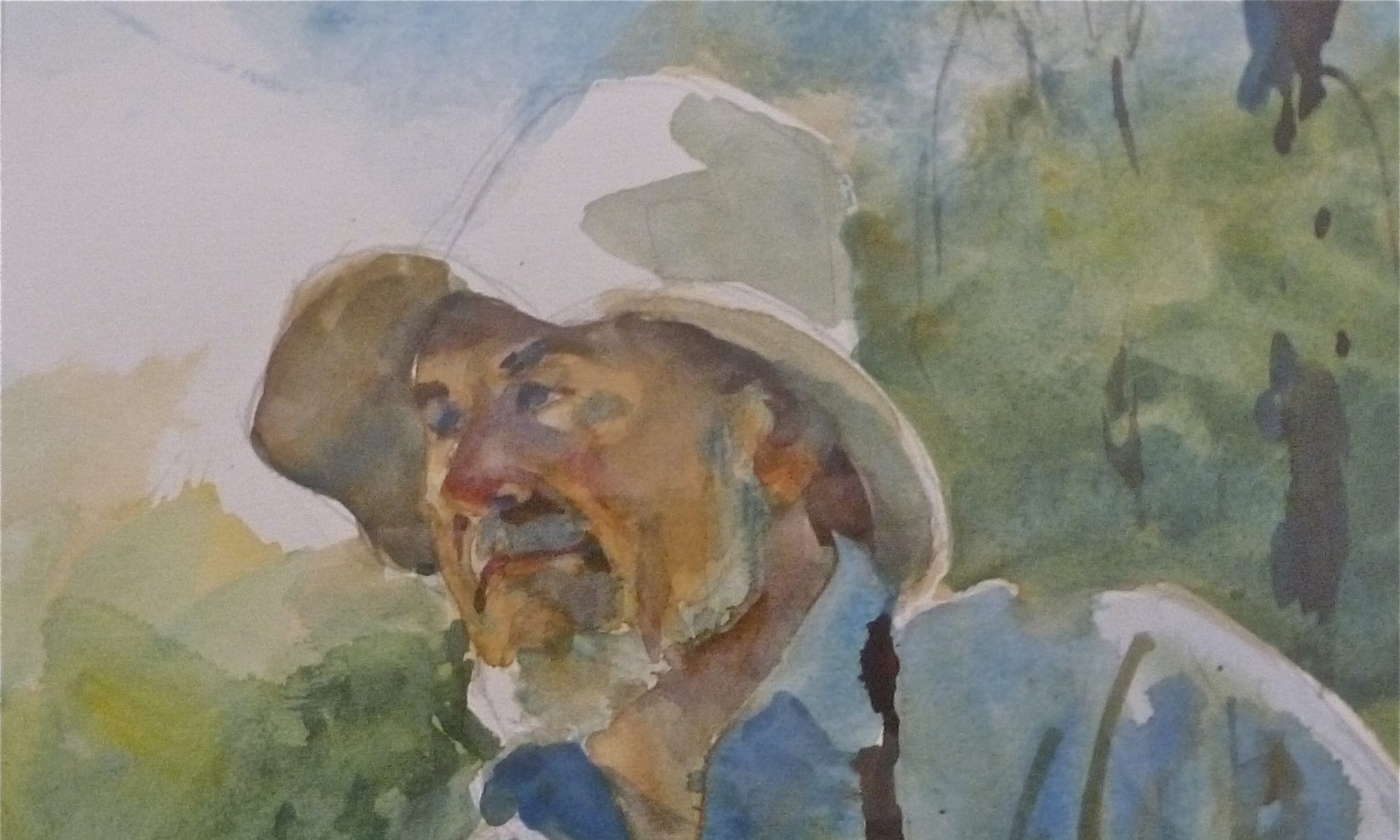Decker did not impress me as to his mechanical abilities. Although the saw mill kept running in spite of him. Maybe because the machinery was built to last a lifetime or a number of lifetimes. On occasion, there was metal breakage due to old age and usage fatigue. If Decker couldn’t fix it with some fencing wire, he would have to call in the local welder and his portable equipment. This distressed Decker because the welder didn’t work for a dollar an hour!
And, bye the bye, both Decker and his son had trouble pronouncing “dollar,” the L’s were replaced with W’s. They had no trouble with, a “buck,” a “fin,” or a “saw-buck,” but a dollar was more like a, “dow-wa.”
Although I have no idea what broke, I remember the welder being there more than once. Other repairs were usually tackled by his workmen, Elmer and Burt Fish. Decker would mostly oversee and provide tools.
His tools, OMG! They were as vintage as the Mill itself. The tools were carried around in an old canvas bag with leather handles. One handle was missing. I convinced Decker to make a wire handle replacement to take the strain off the existing one. Finally he did, and it was made from wire.
 |
| Some vintage Ford truck tools. |
|
His favorite tools were two monkey wrenches. A large one, and a small one. Also, there were pliers, an adjustable wrench, and a few screwdrivers, the blade type. I don’t think Decker knew what a Phillips screwdriver was, nor, had any use for one.
More vintage Ford automotive tools that I have used for over 60 years.

His next favorite tool was fencing wire or hay baling wire. A good amount could be found in his tool bag as well as seen in numerous repairs in the Mill. I remember a coil of it hanging on a wood peg in the mill.
One fall morning Decker was leaving Franklin’s shop as I arrived. I said, “Good mornin Decker.”
He replied, “Nothin good so far,” and left, walking down Pine Street.
After I got to work, in the shop, Franklin brought me up to date. It seems Decker’s yard truck, a Ford model AA, wouldn’t start. That meant the workers couldn’t carry out Decker’s morning plans.
Frank asked me if I had my tools, and of course I did, in my car’s trunk. Off we went to the Saw Mill yard and up to the disabled truck.
I put my test light to work and found no power to the starter. Decker told me a new battery was put in by his men last week, and it’s been starting fine.
Next, a look at the new battery. Well, it had almost fallen to the ground and snapped the ground cable.
The battery box had long ago rotted away, and the fence wire holding it had also rotted and broke away.
Franklin had gone back to his shop,and I was left to solve the problem.
Now, back to the shop to make a plywood box for the battery, then to the Trading Post for a new ground strap. The most difficult task was removing the rusted bolt that held the ground strap. I used fence wire to hold up the plywood box supporting the battery. Oh yes, I too believed in fence wire.
I installed the new ground strap, I gave the starter button a push with the choke on, and away she went. Five seconds later, she stopped and wouldn’t restart.
Well, I checked for gas and it was dry!
Off to the trading post again with my two gallon can for gas.
After gassing her up, off she went. I drove her out to the driveway.
When I returned from a late lunch, the old truck had been moved and now loaded with slabs outside of the saw shed. I never got a thank you, nor paid for the two gallons of gas.
Just another day in “Hatchville!”
by Ray Freden, Marshfield, 70 years.
Worked in Hatchville, 6 years.
“We cannot do everything at once, but we can do something at once.”
– Calvin Coolidge























